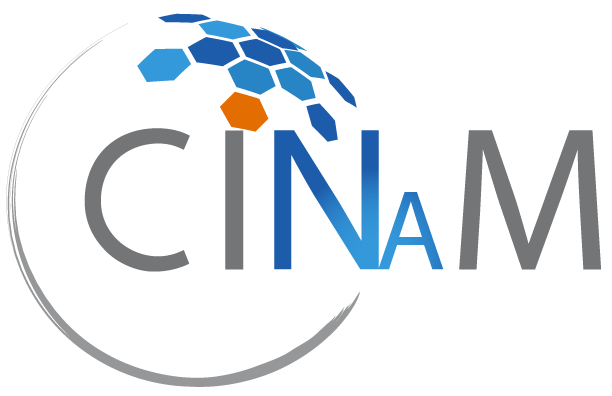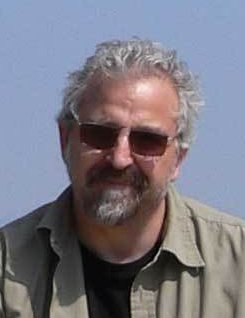Daniel Vielzeuf
Pétrologie, Minéralogie, Biominéralogie, Biomatériaux
Scientific Interests (in chronological order) Granulites, Evolution of the continental crust, Pyrenees, Hercynian belt, Exhumation of orogenic peridotites, Theoretical phase relationships, Partial melting in the continental crust, Garnet, Chemical and isotopic heterogeneities in minerals, Oxygen isotopes in garnet, Chemical diffusion in garnet, Solitary waves, Biomineralogy, Red coral
Two last fields of interest Calcium diffusivity in garnet: Concentration gradients in calcium are common in metamorphic or magmatic garnets and can be used to determine the timescales of geological processes. However, the kinetics of Ca diffusion in garnet is poorly constrained and experimental studies have to date yielded widely varying diffusion coefficients. In this paper, we describe a new method for generating diffusion profiles in garnet. We incorporated polished and compositionally homogeneous garnet seeds in a finely ground powder of clinopyroxene and garnet. During the experiments (1.3 GPa, 1050-1250°C, and ƒO2 ≤ the graphite-O2 buffer), the mineral powder partially melted, recrystallized, and formed a 10 to 50 µm wide overgrowth zone of compositionally distinct garnet around the seeds. Long duration experiments generated measurable relaxation profiles at these seed/overgrowth interfaces. We performed analytical transmission electron microscope traverses across interface in each experiment. Thirteen usable compositional profiles were obtained with characteristic distances of diffusion ranging from 300 to 1000 nm. From these profiles, Ca-(Fe, Mg) interdiffusion coefficients were retrieved using an analytical solution for the diffusion equation and the data were cast in an Arrhenius relation. Linear regression of the data yields an activation energy Q(Ca-Fe, Mg) equal to 188 ± 48 kJmol-1 and a frequency factor Do equal to 6.6×10-14 m2s-1. Within the compositional range studied, the composition of garnet has no major effect on the Ca-(Fe, Mg) interdiffusion coefficient. The very slow diffusion rate of Ca is in agreement with natural observations indicating that Ca diffuses more slowly than Fe and Mg. The Ca diffusion coefficients derived from this study are not model-dependent and can be used to determine the durations of geological events from Ca relaxation profiles in natural garnets. Nano to macroscale biomineral architecture of red coral: Different techniques have been used to characterize the physical and chemical structure of the red coral calcitic skeleton. A section normal to the axis shows a medullar zone surrounded by a circular domain composed of concentric rings. Growth rings are revealed by the cyclic variation of organic matter (OM) and Mg/Ca ratio. These growth rings are annual; thus, both OM and Mg/Ca ratio can be used to date red coral colonies. Growth rings display wavelets. The internal structure of each wavelet results from the stacking of strata with tortuous interfaces. Tortuosity is due to the presence of micro protuberances. Interfaces between strata may display sharp discontinuities indicative of interruption of the mineralizing process. SEM and TEM studies show that each stratum is made of (i) fibers, organized or not in fan-shaped structures, and (ii) submicron (apparently mono-) crystalline units. Fibers are superstructures made of submicron units possibly assembled by an oriented aggregation mechanism. HRTEM studies show that in spite of displaying single crystal scattering behavior, the submicron crystalline units are made of 2-5 nm nanograins again possibly aggregated by a mechanism of oriented attachment. Thus, sub micron crystalline units and polycrystalline fibers can be both defined as mesocrystals. The red coral skeleton is a hierarchically organized organic-inorganic composite that exhibits porosity, structural and compositional order on length scales from the nm to the macroscale.
Employment history - 1978-1980 - Allocataire DGRST - October 1980 - Chargé de recherche de 2ème classe at CNRS - Clermont. - December 1985 - Chargé de recherche de 1ère classe, Clermont. - January 1991 - Directeur de recherche de 2ème classe, Clermont. - October 1998 – Directeur de Recherche de 1ère classe, Clermont - January 2004 - Directeur de Recherche de 1ère classe, Marseille Long stays in foreign countries 1980 : Edinburgh University – Grant Institute, Scotland (3 months) 1984-1985 : Visiting Assistant Professor, Arizona State University, USA (1 year) 1991-1992 : Visiting Associate Professor, Arizona State University (1 year) 1996-1997 – Visiting Professor, Arizona State University (1 year) 2004-2005 – Visiting Professor, CalTech (1 year) 2008 - Visiting scientist, Caltech (3 months)

